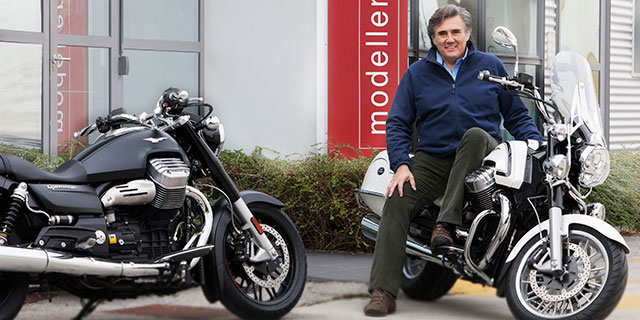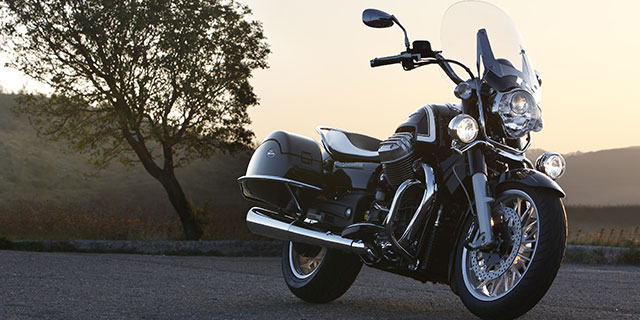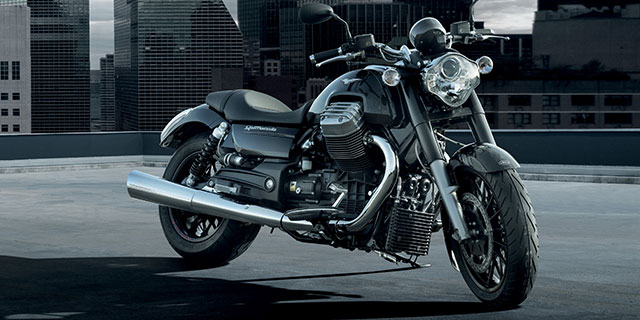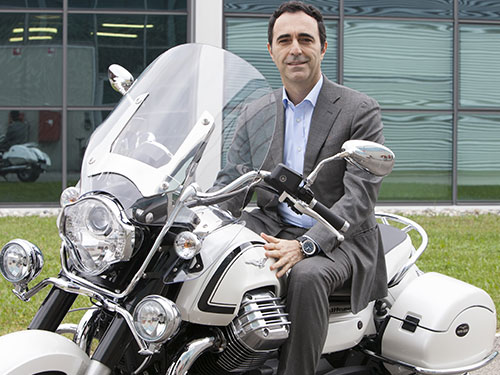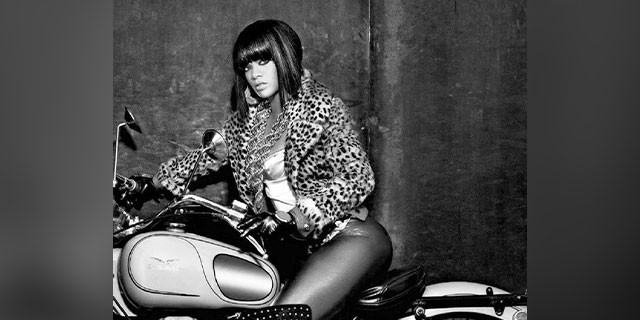NEW MOTO GUZZI CALIFORNIA:
RIDING THE LEGEND
At the end of the 1960s Sergeant Scotty Henderson of the Los Angeles Traffic Enforcement Division crossed the ocean to travel to Lake Como and Mandello del Lario, the home of Moto Guzzi. Waiting for him was the great eagle flying high above the factory gates, the symbol of one of the world’s oldest and most highly respected motorcycle brands.
News about the starred and striped Moto Guzzi bikes also generated keen interest in Europe, strengthening the excellent reputation the V7 had already won with the 700 and Special versions. Photos of the LAPD and Highway Patrol officers clearly show that their Moto Guzzi V7 bikes were quite different to those normally on sale: larger saddle, a cow-horn handlebar, floorboards and a wealth of chrome. These stylistic elements gave the V7 an American image that proved popular, and boosted demand to the point where Moto Guzzi decided to begin mass production, starting in 1971, with the name California.
Since then seven generations and four displacement capacities have followed (750, 850, 1000, 1100) and more than one hundred thousand bikes have been produced: a success. On the roads for more than forty years, the Moto Guzzi California is the most famous Italian motorbike in the world. It has patrolled US freeways, escorted kings, queens and presidents, and entered the garages of the stars of stage and screen, winning a place in the motorcycling hall of fame. More than any other model built at Mandello del Lario, the California represents the values and strength of the Moto Guzzi brand: style, comfort, reliability and performance. A success rooted in a rare quality: the ability to combine the comfort and loading capacity of a custom bike with the dynamic performance of a powerful roadster.
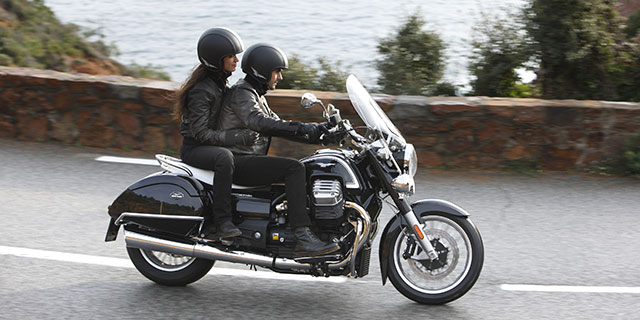
Now, as in the time of Sergeant Scotty, the new Moto Guzzi California 1400 Touring and 1400 Custom bikes are “built with pride in Italy" and assembled by hand at the Mandello del Lario factory. With the difference that they are the most innovative, technological and powerful Moto Guzzi bikes ever made, the symbol of what since 1921 has been a unique culture and motorcycle construction capability. In terms of innovation and style, they are a turning point in the history of Moto Guzzi, one of the oldest and most distinguished names in motorcycling history. Just looking at them justifies the expression the “art of the motorcycle". Just sitting in the saddle justifies the expression “riding a legend".
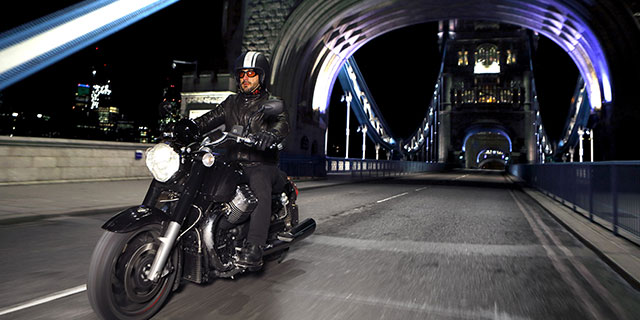
Ready for the roads of the third millennium, the California 1400 is an imposing, exclusive bike, with the power to exalt the nobility of a brand that stands for “made in Italy". Starting from the stylistic intuition of an innovative design, which, nonetheless, is recognisably consistent with the genealogy of the seven generations of California bikes produced to date, the main distinguishing Moto Guzzi features have been re-engineered, with the most advanced technologies of Europe’s leading motorcycle group. These are the results: a V twin engine with the largest displacement capacity ever built in Europe, providing a stunning torque of 120 Nm at just 2,750 rpm; the world’s first custom bike equipped with MGCT traction control and multimap Ride by Wire technology, with a choice of three different fuel delivery systems: Tourism, Fast and Rain; the world’s first custom bike equipped with a front light assembly with LED daytime running lamps (DRLs) of the kind mounted on today’s new automobiles; an unprecedented double-cradle frame equipped with an elastic engine fastening system to eliminate completely the transmission of vibrations; a new cardan shaft drive, at the top of its category in terms of fluidity and silent operation. There’s no question about it: motorcycling art and mastery merge in the new California 1400 bikes, two very special motorcycles, quite different from any that have gone before. Yet a doubt remains, of Hamletic proportions. Touring or Custom? Will you choose the Touring, a classic California sumptuously equipped for long-distance travel? Or the Custom, the feisty “bad girl", an all-out cruiser? Bikers will find it a difficult choice.
MY CALIFORNIA
There’s only one way to make this unique bike even more luxurious: customise it with Moto Guzzi original accessories, many of them designed by the MG Style Centre. The new California 1400 boasts the most extensive catalogue of top-quality, exclusive-design accessories ever produced by Moto Guzzi. Leather for side bags and saddles, chrome trim, steel and aluminium, for a broad range of accessories, and technology in abundance.PHOTO GALLERY
CALIFORNIA TOURING
ACCESSORIES
CALIFORNIA CUSTOM
ACCESSORIES
Technology like the iGuzzi, a device enabling riders to connect their smartphones to the California (BlueDash technology), and turn it into a multimedia platform to manage bike and travel information. The Bluetooth connection provided by the iGuzzi, together with GPS and Internet functions, make the smartphone an integral part of the bike’s instruments.
The catalogue also includes a satellite-based anti-theft system: the transponder-activated anti-theft system tracks the location of the bike so it can be found if stolen. An operations room is in constant contact with the motorcycle to monitor anomalies and, if the bike is stolen, alert the police. Around the world 36 operations rooms are active to intervene should the bike be taken out of the country. Apps for Apple and Android provide the bike owner with the route taken by the bike, to be shared with the biker community.



























